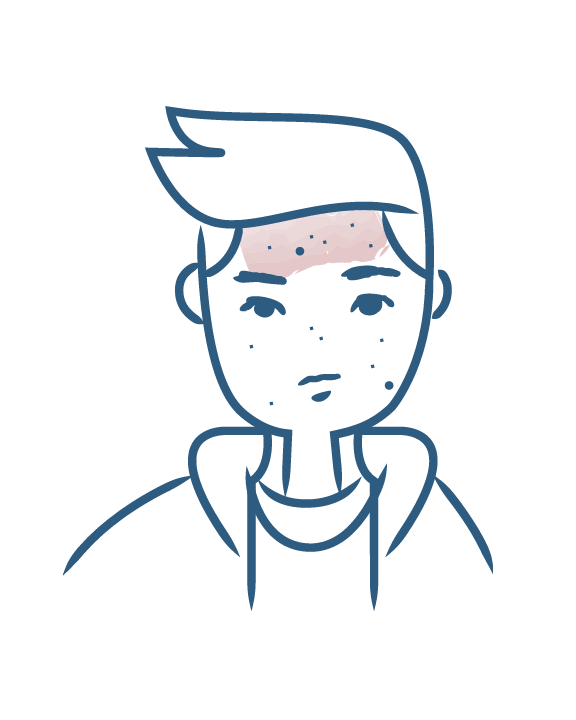Acne symptoms
Blackheads: what are they?
Blackheads belongs to the family of retentional lesions and are often accompanied by their faithful sidekicks, whiteheads. The scientific name for the blackhead is open comedone, while the whitehead is referred to as a closed comedone. The blackhead is also called a "skin worm" because a brown filament escapes from it when it is pierced. Blackheads and acne are inextricably linked.
How do blackheads develop?
Blackheads are one of the first signs of acne. Initially, a micro lesion (microcomedone) appears on the skin due to hyperseborrhea (accumulation of sebum, oily skin and dilated pores) and hyperkeratinization (build-up of cells and thickening of the skin). This microlesion is invisible to the naked eye and turns into a black or white spot. Blackheads consist of a build-up of debris in a pore of the skin and the formation of a spot that oxidizes on contact with air and turns black.
How do blackheads evolve?
Blackheads can rupture and spread their content outwards, either spontaneously or when pressed with fingers or a blackhead remover. Blackheads can also progress to an inflammatory stage and form a red and painful acne spot. They can also become infected if handled too much.
How should you deal with blackheads?
To eliminate blackheads, use cosmetics (lotions, creams, masks) filled with keratolytic-active ingredients that will help to unclog pores blocked by sebum and dead cells.
Should you pierce a blackhead?
It is very tempting to pierce blackheads, especially if they are persistent or painful. But remember to be careful! If you touch the skin, you may end up with an infected blackhead or worse, a scar. You are better off using the prescribed treatment and daily care. The dermatologist may suggest removing the blackheads by skin cleansing or using laser treatment techniques.
More information
- Discover Acne on the face
Acne symptoms
Acne on the face
- Discover Whiteheads: what are they?
Acne symptoms
Whiteheads: what are they?
- Discover Acne spots: what are they?
Acne symptoms
Acne spots: what are they?
- Discover Acne or rosacea?
Acne symptoms
Acne or rosacea?
- Discover Acne on the chin
Acne symptoms
Acne on the chin
- Discover Acne on the forehead
Acne symptoms
Acne on the forehead
- Discover Acne on the back
Acne symptoms
Acne on the back
Our care routines
Oily or acne-prone skin
- Discover Anti-blemish face care summer routine for adult skin
Anti-blemish face care summer routine for adult skin
Dermatological expertise
To better understand your skin and hair, discover our exclusive content and innovative care products designed to improve your quality of life..

